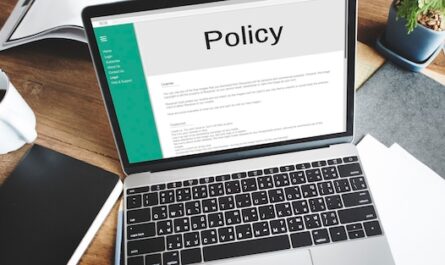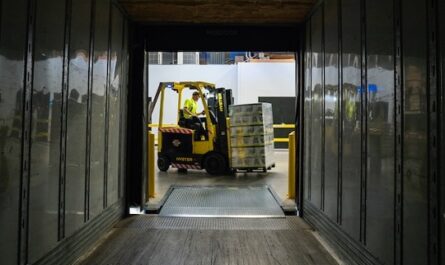So you’re in supply chain. Maybe you’re knee-deep in just-in-time delivery schedules, negotiating with suppliers, or firefighting because a part didn’t show up and now a whole line is at risk. Maybe you’re trying to forecast demand for a product that could expire in two weeks or fly off the shelves because a TikTok trend said so. Either way, if you’ve ever considered jumping from the automotive industry into FMCG, or the other way around, you’re probably wondering: How different can it be?
Short answer? A lot. But it’s also doable. And in this post, we’re going to walk through it like we’re having a cup of coffee together—unpacking what makes each world tick, what happens when you try to move between them, and why the switch can feel more like moving to a new planet than just a new job.
Before we go further into this topic, don’t forget to follow my LinkedIn account. You’ll get more helpful insights on supply chain management there.
Table of Contents
Two Worlds, Two Rhythms
Imagine working in automotive supply chain. Everything’s about precision, timelines, and coordination with a multi-tiered network of suppliers. There’s a rhythm to it: the rhythm of long lead times, meticulous planning, and strict quality gates. It’s like orchestrating a symphony where one missed note from a Tier 2 supplier in Malaysia could throw off the entire piece.
Now jump over to FMCG. Here, the rhythm is faster, punchier, chaotic in a different way. Forecasts change by the week, sometimes by the day. Consumer trends drive demand spikes that feel more like flash floods than tides. The downstream is a jungle of distributors, retailers, wholesalers, and increasingly, e-commerce platforms. You’re not trying to build a perfectly engineered vehicle; you’re trying to win shelf space, maintain availability, and stay ahead of consumer expectations that can shift faster than your planning cycle.
And this is where the divergence begins.
Upstream vs Downstream: Where the Real Battle Happens
One of the simplest ways to understand the difference is this: Automotive supply chains are complex upstream; FMCG supply chains are complex downstream.
In automotive, most of the heavy lifting happens before the product is even made. You’re dealing with thousands of components, often from dozens of countries. The lead time for a part can be months. You’re optimizing production runs, managing engineering change notices, and coordinating inbound logistics with tight sequencing. You mess up upstream, and the car doesn’t get built.
FMCG flips the challenge. The manufacturing might be relatively straightforward, but once the product is made, the real game begins. Distribution is king. Shelf presence matters. Expiry dates are real. If your shampoo doesn’t get to the right retail store on time, someone else’s shampoo will. If your biscuit sits too long in the warehouse, it’s a loss. You’re playing chess in the retail jungle.
It’s also worth noting that in automotive, upstream complexity often comes with higher predictability. Parts are engineered to specification, and the whole supply chain runs on forecast-driven production plans. With FMCG, even if your upstream is relatively stable, the volatility downstream makes the entire network more dynamic. It’s like comparing a long-distance train network with a city metro during rush hour. Both are complex, but the type of complexity matters.
You might also like:
- The Silent Battle of KPI Monitoring in Supply Chain
- Surviving Peak Season and Holiday Road Restrictions Without Chaos
Can People Really Switch Industries?
Yes. Absolutely. But you need to rewire how you think.
What throws most people off isn’t the functional skills—forecasting, planning, procurement—those are surprisingly transferable. It’s the mindset, the tempo, the priorities. Someone from automotive might walk into FMCG expecting structured planning cycles and clear engineering specs. What they get instead is promotional-driven demand volatility and a constant chase to avoid stockouts.
Conversely, someone from FMCG might jump into automotive expecting speed and flexibility, only to find themselves bogged down by documentation, design freezes, and change approval boards.
It’s like switching from chess to speed chess. Same board. Same pieces. But very different experience.
There’s also the emotional adjustment. In automotive, you’re often dealing with fewer SKUs, high-value products, and clear production cycles. In FMCG, the sheer variety of SKUs and the breakneck pace of decision-making can feel like jumping into a whirlwind. Some people thrive in it. Others need time to find their footing.
Common Roadblocks and Hidden Friction
One of the biggest challenges in switching industries isn’t just the work itself. It’s the assumptions we carry with us. An automotive supply chain professional might be used to supplier development programs, long-term contracts, and a deeply embedded lean culture. When they enter FMCG, they might get frustrated by last-minute demand shifts or the need to push volume aggressively through distributors.
FMCG professionals, on the other hand, might underestimate how much structure and engineering discipline is required in automotive. They might think, “How hard can it be to build a car?” until they find themselves in a meeting debating the torque specification on a bolt that holds a seatbelt in place.
There’s also a branding issue. Hiring managers can be skeptical of candidates from a different industry. They worry about fit, about ramp-up time, about whether someone can handle the pace or complexity. Sometimes it’s not about capability; it’s about perception.
Cultural dynamics can also trip people up. Automotive tends to have a more hierarchical and engineering-driven culture. Titles and structure matter. FMCG, especially in commercial-facing roles, can be flatter and faster, with more empowerment at lower levels. If you’re used to formal approval chains, FMCG might feel like the Wild West. If you’re used to acting fast and asking for forgiveness later, automotive might feel like molasses.
Bridging the Gap
If you’re thinking about switching from one industry to the other, the best thing you can do is build a story.
Highlight what’s common: your experience with ERP systems, your success with cost savings, your ability to build supplier relationships, your comfort with ambiguity. Then, acknowledge what’s different—and how you’ve prepared to handle it.
Talk about your adaptability. Tell stories about times you were thrown into the unknown and figured things out. Make it clear that you know what you’re getting into, and you’re not underestimating the leap.
And if you’re a hiring manager? Start looking beyond the resume. Skills can transfer. Mindsets can evolve. Some of the best supply chain thinkers are those who’ve been forged in different fires.
Try to find candidates with curiosity. People who ask good questions. People who don’t just say “this is how we did it” but instead say, “how does it work here?” Those are the ones who will adapt and thrive, no matter the industry.
Engineering vs Marketing-Driven Supply Chains
Another way to understand the divide is to look at what drives the business.
Automotive is engineering-driven. Product development cycles are long. Once specs are locked in, there’s little room for change. The focus is on precision, safety, regulatory compliance. Supply chain plays a critical role, but it often follows the rhythm of the product development team.
FMCG is marketing-driven. Products evolve fast. Flavors change. Packaging updates happen with every campaign. Promotions and seasonal pushes dictate planning. The supply chain has to be agile, able to turn on a dime.
So when someone used to engineering-driven thinking steps into a marketing-driven world, they can feel like the ground is constantly shifting. And when someone used to rapid iterations walks into a tightly controlled engineering ecosystem, they might feel like everything takes forever.
This also affects how decisions get made. In automotive, you might have to go through five meetings and three sign-offs to change a supplier. In FMCG, you might be expected to make that call by the end of the day because the promotion starts next week.
You might also like:
- Why Your Production Planning Keeps Failing and How to Fix It
- Why Your Inventory Records Never Match the Physical Stock and How to Fix It
Why This Matters for Your Career
If you’re early in your career, getting exposed to both worlds can be a superpower. You learn how to think long-term like automotive folks do, but also how to execute with speed like FMCG pros. You build both depth and breadth.
If you’re mid-career and thinking about switching, it can feel risky. But it can also be the shake-up that elevates your thinking. Imagine bringing lean manufacturing principles from automotive into a chaotic FMCG warehouse. Or bringing demand-driven planning from FMCG into an automotive aftermarket operation.
If you’re a leader, knowing how to straddle both worlds gives you better judgment. You become more empathetic. You make better hiring calls. You design better processes. And you build teams that aren’t just technically sound, but strategically versatile.
Being bilingual in the language of automotive and FMCG gives you a broader view. It means you can spot risks others might miss. It means you can design systems that aren’t just efficient, but resilient. And it makes you a better coach, because you can help your team see past their own blind spots.
Final Thoughts for the Curious Supply Chain Professional
Switching between automotive and FMCG isn’t about better or worse. It’s about different. Different pressures. Different KPIs. Different rhythms. And navigating those differences can make you sharper, more resilient, and more valuable in the long run.
So if you find yourself wondering what it’s like on the other side, don’t let the fear of the unknown stop you. Talk to people who’ve made the switch. Learn their language. Shadow their operations. And if the opportunity comes, take the leap. Because sometimes, the best way to grow isn’t by going deeper in what you know. It’s by stepping into what you don’t.
And who knows? Maybe switching universes is exactly what you need to see your own world with fresh eyes. Maybe that challenge you’ve been craving isn’t in the next job title or project, but in an entirely new industry.
Because in the end, supply chain is about flow. And sometimes, to improve your flow, you need to change your current.
Now, take a moment. Picture yourself in the other world. Imagine the pace, the pressure, the patterns. Does it scare you? Intrigue you? Energize you?
Whatever the answer is, lean into it. That feeling? That’s where the growth happens.
I hope you find it helpful!
Please share this article with your colleagues so they can also benefit. For more insights on supply chain management, follow my LinkedIn account. You’re free to use all articles on this blog for any purpose, even for commercial use, without needing to give credit.
 by
by 

